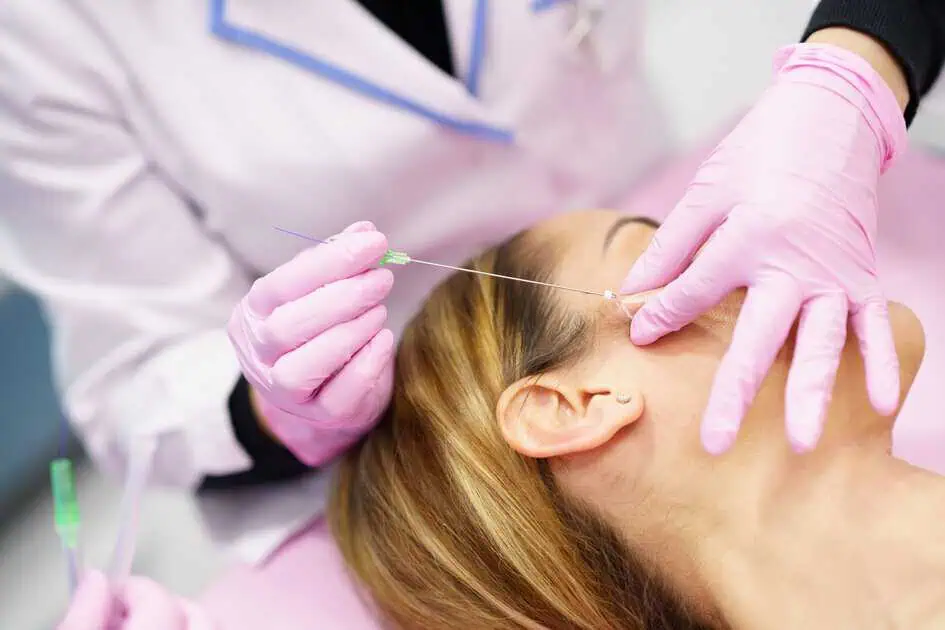Are you considering a hair transplant but unsure whether to go for FUE or FUT? You’re not alone. With the variety of hair restoration options available today, choosing the right one can be overwhelming. Whether you’re looking to restore your hairline, increase hair density, or address thinning patches, understanding the differences between these two popular methods is crucial. Both Follicular Unit Extraction (FUE) and Follicular Unit Transplantation (FUT) have their unique advantages and drawbacks.
What is FUE (Follicular Unit Extraction)?
FUE involves extracting individual hair follicles from the donor area using a micro-punch tool. This method does not involve cutting any tissue from the donor site, which results in minimal scarring. The extracted follicles are then transplanted to the thinning or balding areas.
Benefits of FUE
- High Graft Quality: The ARTAS system allows for real-time 3D analysis, selecting the healthiest follicles for transplantation.
- Minimal Scarring: Scars are tiny and scattered, making them less noticeable and ideal for patients who prefer short hairstyles.
- Quick Recovery: Patients can return to daily activities within a few days since the method is minimally invasive.
- Less Discomfort: The procedure uses local anesthesia, and patients experience minimal pain during and after the process.
What is FUT (Follicular Unit Transplantation)?
FUT involves removing a strip of scalp tissue from the donor area, typically the back of the head. The strip is then dissected into individual follicular units under a microscope before being transplanted to the balding areas. This method leaves a linear scar at the donor site.
Benefits of FUT
- Higher Graft Yield: FUT can harvest a larger number of grafts in a single session, which is beneficial for extensive hair restoration.
- Cost-Effective: The procedure is generally less expensive upfront compared to FUE because it requires less time per graft.
- Efficient for Extensive Hair Loss: Suitable for patients needing a significant number of grafts.
Key Differences Between FUE and FUT
When comparing FUE (Follicular Unit Extraction) and FUT (Follicular Unit Transplantation), several key differences, including the harvesting technique, scarring, recovery time, and procedure duration. Knowing these distinctions can help you decide which method aligns best with your hair restoration goals and lifestyle.
Harvesting Technique
- FUE: Individual follicles are extracted directly from the scalp. This method uses tiny, circular incisions, resulting in minimal visible scarring.
- FUT: A strip of the scalp is removed from the donor area, and individual follicles are dissected from this strip, leaving a single linear scar.
Scarring
- FUE: Leaves tiny, dot-like scars that are spread across the donor area, making them less noticeable, especially with short hair.
- FUT: Results in a single, linear scar that can be noticeable if the hair is cut very short.
Recovery Time
- FUE: Patients typically recover within a few days, thanks to the less invasive nature of the procedure.
- FUT: The recovery period is longer due to the surgical nature of the strip removal, and stitches or staples need to be removed later.
Procedure Duration
- FUE: Takes longer to perform due to the meticulous extraction process, usually between 6-12 hours depending on the number of grafts.
- FUT: Generally faster, taking about 4-8 hours, but the recovery period is longer.
Combining Both Treatments
Some patients may benefit from combining FUE and FUT to maximize hair restoration results. This approach leverages the strengths of both methods, providing a more comprehensive solution.
Advantages
- Maximized Graft Harvesting: Combining methods can significantly increase the total number of grafts available, which is especially beneficial for patients with extensive hair loss.
- Optimized Scarring: Using FUT for the initial large sessions and FUE for subsequent procedures can help minimize visible scarring.
Procedure
- Initial Session: FUT is used to harvest many grafts efficiently.
- Subsequent Sessions: FUE is employed to refine the hairline and add density without additional significant scarring.
Patient Suitability
- Ideal for patients who need a large number of grafts and are concerned about scarring. This approach requires careful planning and consultation with an experienced hair restoration specialist.
Factors to Consider When Choosing Between FUE and FUT
Choosing between FUE and FUT involves evaluating several factors, such as the extent of hair loss, quality of the donor area, and personal preferences regarding recovery time and scarring. By carefully considering these elements, you can determine the most suitable method for your hair restoration needs.
Extent of Hair Loss
- FUE: Best suited for patients with minimal to moderate hair loss or those who want to minimize visible scarring.
- FUT: More suitable for patients needing extensive hair restoration due to its higher graft yield per session.
Donor Area Quality
- FUE: Beneficial for patients with tighter scalps or those with insufficient donor hair, as it uses hair from various parts of the scalp.
- FUT: Requires a larger, healthier donor area to remove the necessary strip of scalp tissue.
Personal Preferences
Consider factors such as recovery time, scarring, and budget. Consulting with a hair restoration specialist is crucial to determine the best method for your individual needs.
Hair Transplant Before and Aftercare
Following these before and aftercare guidelines can significantly enhance the success and appearance of your hair transplant, ensuring a smooth recovery and natural-looking results.
Before care
Proper preparation before a hair transplant is essential for the best results:
- Consultation: Consult your specialist in detail to set realistic goals and create a personalized treatment plan.
- Avoid Medications: Stop taking blood thinners like aspirin and NSAIDs as your doctor advises to reduce bleeding risks.
- No Smoking or Alcohol: Avoid smoking and alcohol for at least a week before the surgery to promote better healing.
- Scalp Care: Use an antibacterial shampoo if recommended, and keep your scalp clean.
- Healthy Lifestyle: Eat a balanced diet and stay hydrated to prepare your body for recovery.
Aftercare
Post-operative care is crucial for successful healing:
- Follow Instructions: Adhere strictly to your surgeon’s post-op care guidelines, including keeping your scalp dry initially.
- Medication: Take prescribed antibiotics and anti-inflammatory drugs to prevent infection and manage pain.
- Gentle Washing: Use mild shampoo to wash your hair after a few days gently.
- Avoid Strain: Refrain from strenuous activities and heavy lifting for at least a week to prevent graft dislodgement.
- Attend Follow-Ups: Follow all follow-up appointments to monitor healing and address any issues.
- Long-Term Care: Protect your scalp from sun exposure and maintain a healthy lifestyle for hair growth.
Takeaway
Choosing between FUE and FUT hair transplants involves weighing several factors, including the extent of hair loss, donor area quality, recovery time, and budget. Both methods have their unique advantages and can deliver excellent results when performed by skilled professionals. You can make a well-informed decision by understanding these differences and considering your needs.
If you’re ready to take the next step in your hair restoration, Dolce Vida Medical Spa offers expert consultations, state-of-the-art hair transplants, and other services. Personalized care and natural-looking results are a priority for our experienced team. Contact us today to start your assessment.







